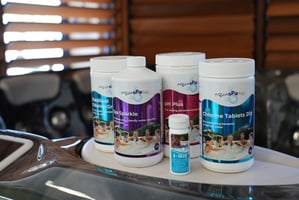Delivering hot tubs and swim spas into gardens is no small feat but fear not if there is a will...
Contrast Therapy: How To Take Sauna Season To The Next Level
As the colder months set in and sauna season begins in earnest, contrast therapy has never been more relevant or more powerful. By alternating between hot and cold exposures (sauna, steam, cold plunge, showers), contrast therapy delivers a host of physical, mental, and wellness benefits. Here’s what contrast therapy is, how it works, its benefits, and how to enjoy it safely and effectively.
What Is Contrast Therapy?
Contrast therapy refers to the practice of switching between periods of heat (e.g. sauna, steam, infrared) and cold (e.g. plunge pools, cold showers, cold water immersion). Rather than using just one extreme, the alternation is central. It stimulates physiological systems in ways that heat or cold alone cannot.
How Does Contrast Therapy Work?
At its core, contrast therapy leverages two key biological responses:
-
Vasodilation: When exposed to heat, blood vessels expand, increasing circulation, oxygen delivery, and allowing muscles to relax.
-
Vasoconstriction: When exposed to cold, vessels narrow, reducing blood flow to the outer limbs but mobilising the circulatory system to flush metabolic waste and reduce inflammation.
By moving between heat and cold, the body undergoes repeated cycles of dilation and constriction. This acts like a pump, enhancing circulation, boosting recovery, and strengthening the body’s adaptive responses. Research suggests contrast therapy can help with immune response, reduce inflammation, and support mental clarity.
Key Benefits of Contrast Therapy
Here are some of the benefits that contrast therapy offers, especially when paired with regular sauna use:
-
Improved Circulation & Cardiovascular Health
The repeated cycling of heat and cold enhances vascular function. It can improve blood flow, increase oxygen delivery, and help the cardiovascular system adapt and strengthen. -
Faster Recovery & Reduced Muscle Soreness
After intense workouts or physical strain, contrast therapy helps reduce delayed-onset muscle soreness (DOMS). The cold phases help reduce inflammation; the heat phases promote blood flow and nutrient delivery. -
Heightened Immune Function
Alternating heat and cold can stimulate immune cells, reduce markers of inflammation, and generally support immune system resilience. Some studies and wellness centres report fewer illnesses with regular contrast therapy. -
Mental Clarity, Mood & Stress Relief
There’s a strong mental component. The heat phases help with relaxation, reducing stress hormones like cortisol; the cold phases can produce alertness, endorphin release, and an invigorated feeling. Many users report improved mood and sharper mental focus. -
Better Sleep & Relaxation
After contrast therapy, many find sleep comes more easily. The body undergoes a thermal “reset” that can help with relaxation; the contrasting temperatures may facilitate a drop in core body temperature that aids in preparing the body for rest. -
Reduced Inflammation & Pain Relief
Cold exposure helps reduce swelling and numb pain receptors; heat helps loosen tissues and reduce stiffness. For people with soreness, joint stiffness, or even chronic pain conditions, contrast therapy can be a useful tool. -
Skin Health & Detoxification Effects
The heat helps promote sweating, which supports cleansing of pores, while cold exposure helps tighten pores and can improve skin tone. Enhanced circulation also supports skin nourishment.
How to Do Contrast Therapy Safely and Effectively
-
Start gradually — If you’re new to heat or cold exposure, begin with milder or shorter sessions and build up.
-
Typical protocol might look like:
-
Heat phase: 10-15 minutes in sauna or steam
-
Cold phase: 1-3 minutes cold plunge or cold shower
-
Repeat 1-2 times (or more, depending on tolerance)
-
Always finish with the phase that aligns with your goal (if you want to relax and sleep, possibly finish with heat; if you want invigoration, perhaps cold)
-
-
Listen to your body — Lightheadedness, extreme discomfort, or dizziness are signs to take breaks or ease off. Hydrate well. Move at your own pace.
-
Ensure safe transitions — Make sure surfaces are non-slip; have warm clothing or towels nearby; allow time to acclimate between temperature changes.
-
Frequency — Many wellness centres recommend doing contrast therapy once or twice a week, though personal goals and fitness can allow more frequent use. Regular, consistent practice leads to more noticeable benefits.
.png?width=960&height=300&name=Untitled%20design%20(46).png)
